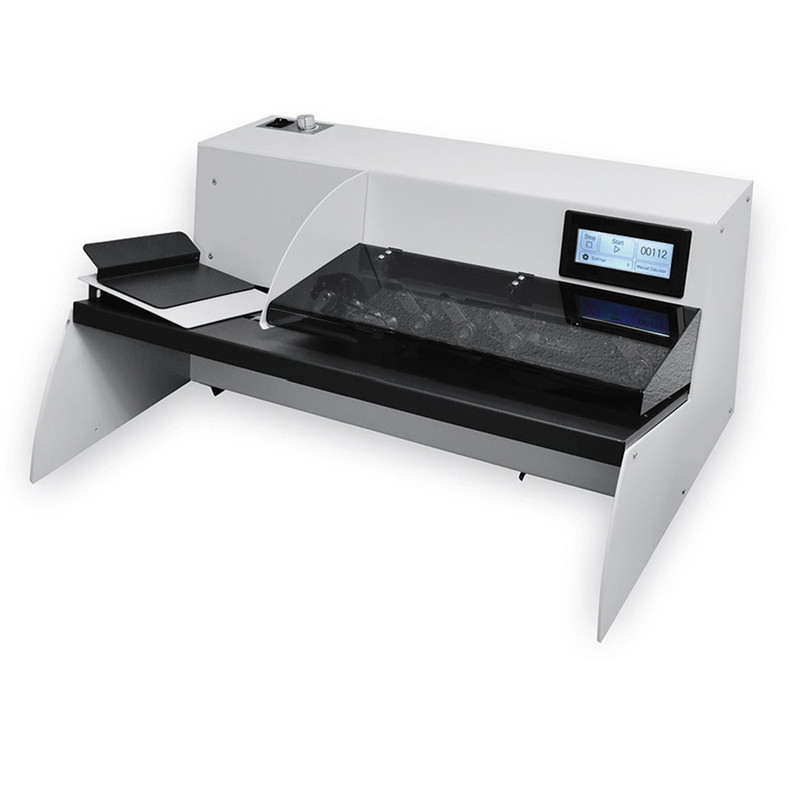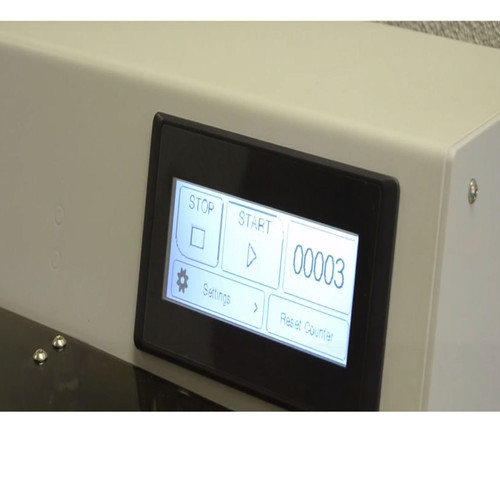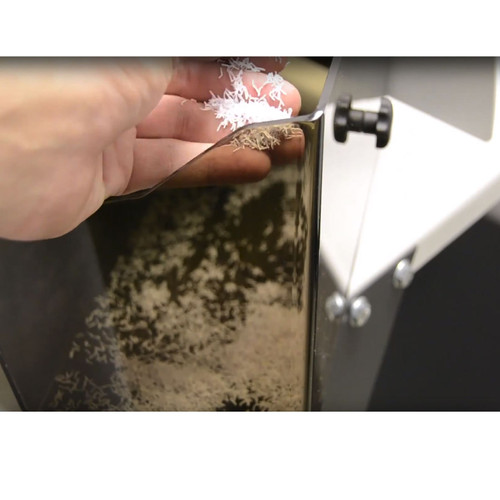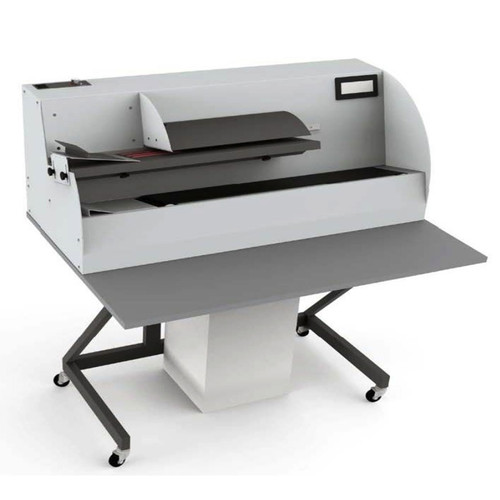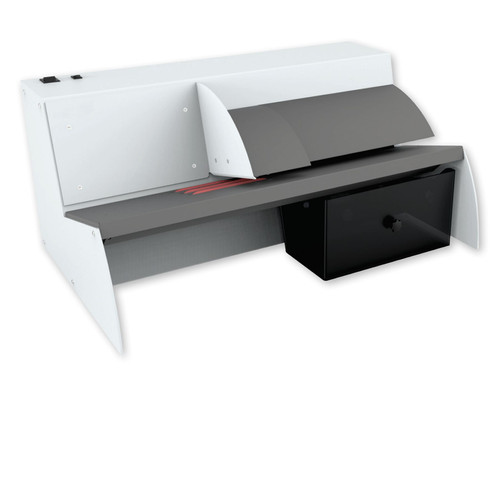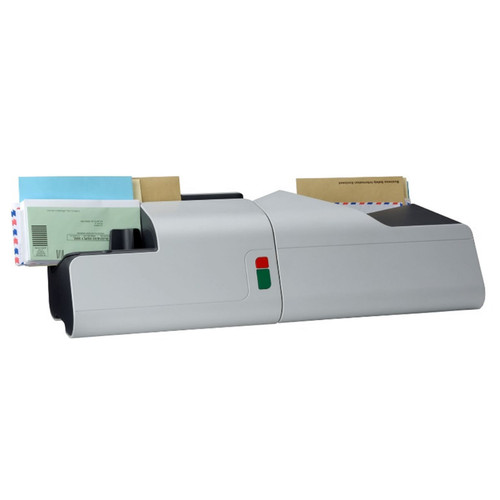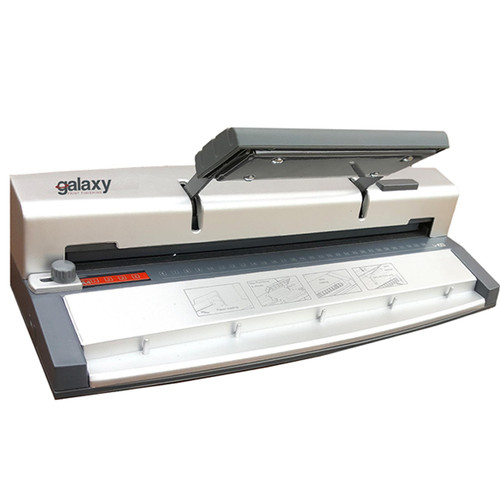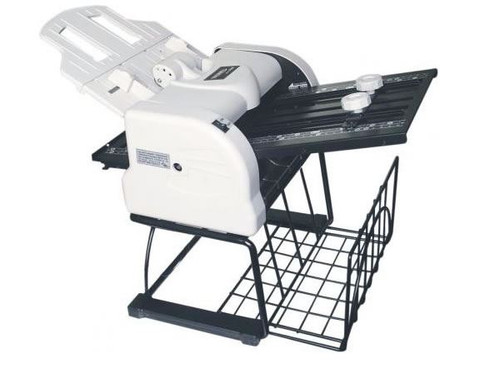Description
Rapid letter opening minimises delay in starting an optimised incoming mail workflow including opening and electronic document management (open/scan/distribute/track/store/record/update data). Supports achievement of post room service level agreements. Milling cutter technology precisely slits envelope side so valuable contents are undamaged.
Handles up to 32,000 envelopes per hour. Opens and presents contents for easy extraction. No need to pre-sorting mixed mail. Up to 1000 opened envelopes can be stacked beneath the input feeder for easy removal. Simple to use with multi-function touch screen. Handles a wide range of envelopes – Up to 4 mm manual feed and up to C4.
Mail reaches the addressee quicker and in perfect condition, allowing faster processing of revenue driving documents such as cheques or sales orders. Customer satisfaction is enhanced through quicker response to enquiries and orders.
Saves labour opening mail. Faster payment processing helps cashflow.
SPECIFICATIONS
| Suitable For: | Up to 600,000 Per Month |
| Paper Size: | Envelope Sizes: All - Loading Stack 300 - Mixed Mail |
| Paper Weight: | Thickness up to 6mm Envelope |
| Sheets Per Minute: | Up to 530 envelopes per min |
| Sheets Per Hour: | 31800 |
| Feed Tray Capacity: | Loading Stack: 300 Envelopes Mixed Mail |
| Speed Controller: | Yes |
| Piece Counter: | Yes |
| Feed Type: | Cut Type: Milling |
| Hand or Automatic Feed: | Automatic |
| Conveyor for Exiting Paper: | No |
| Auto Shut Off: | No |
| Reload Whilst Running: | Yes |
| Dimensions W x D x H (mm): | 1070 x 750 x 1195 |
| Weight (Kg): | 90 |
| Extended Warranty Maintenance Available: | Yes - Available |
| Special Features 1: | Touch Screen |
| Special Features 2: | 3 Feed Settings |
Warranty Information
Additional Details
- SKU:
- 101426
FREQUENTLY ASKED LETTER OPENING MACHINE QUESTIONS
A letter opening machine is designed to automate the process of opening envelopes efficiently. The specific workings may vary depending on the model and technology used, but here is a general overview of how a typical letter opening machine operates:
1. Feeding: The envelopes are automatically fed into the machine. The letter openers have a large tray where you can load a stack of envelopes.
2. Envelope Separation: The machine separates individual envelopes from the stack, ensuring only one envelope is processed at a time. This is done through mechanical separation rollers.
3. Slitting: Once a single envelope is isolated, the machine proceeds to open it. Typically, the machine utilises a cutting mechanism, with a slitting action, to make a precise slit along one edge of the envelope. or milling action which removes the top of the envelope and produces a small amount of paper waste. The cutting method may vary depending on the machine's design and capabilities.
4. Contents Protection: The Galaxy letter opening machines take care to ensure the contents of the envelope are not damaged during the opening process. The slit made by the machine are positioned in a way that avoids cutting through essential documents or materials inside.
5. Waste Management: As the envelope is opened, the machine may simultaneously remove any waste, such as envelope remnants or shreds. This can be done through a waste tray or collection system integrated into the machine. Some machines may also have features to handle and discard items like paperclips, staples, or other obstructions that may be present in the envelopes.
6. Output: Once the envelope is opened and the waste is removed, the machine dispenses the opened envelopes, often onto a conveyor belt or into a separate collection tray. This allows for easy retrieval and further processing of the mail.
It's important to note that different letter opening machines may have additional features, such as automation, sorting capabilities, or integration with other mail processing systems. The complexity and functionalities of a machine can vary, but the basic principle remains the same: to streamline the process of opening envelopes efficiently while safeguarding the contents inside.
Yes, the Galaxy letter opening machines are designed to handle mixed mail without the need for pre-sorting. These machines are equipped with advanced technologies and mechanisms that can automatically process envelopes of different sizes, thicknesses, and types in a single feed.
Installing and setting up a letter opening machine can vary depending on the specific model. However, most letter opening machines are designed to be user-friendly and straightforward to install and set up. Here are some general points to consider:
The letter opening machine comes with a detailed user manual or instruction guide that provides step-by-step guidance on installation, setup, and operation. It's important to carefully read and follow these instructions to ensure proper installation and optimal performance.
Plug-and-Play Setup: Our letter opening machines are designed for plug-and-play functionality, which means they can be connected to a power source and used right away. These machines typically require minimal setup, involving basic tasks such as connecting power cables or plugging in the machine.
The need for high-speed processing when buying a letter opening machine depends on your specific requirements and the volume of incoming mail your office or business handles. High-speed processing may be necessary in certain situations, while it may not be a priority in others. Here are some considerations:
High-Volume Mail Operations: If your office receives a substantial volume of incoming mail on a daily basis, especially if it includes a large number of envelopes, a high-speed letter opening machine can significantly improve efficiency and reduce processing time.
Time Sensitivity: Consider whether you frequently receive time-sensitive documents that need to be opened and processed quickly. In such cases, a high-speed machine can help ensure that critical information is accessed promptly.
Workflow Efficiency: High-speed machines are designed to handle a large number of envelopes per minute, making them suitable for businesses with high-demand mail processing needs. This can free up staff time for other tasks.

